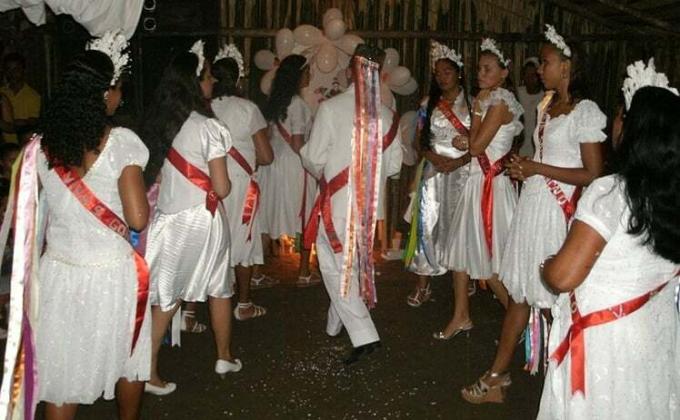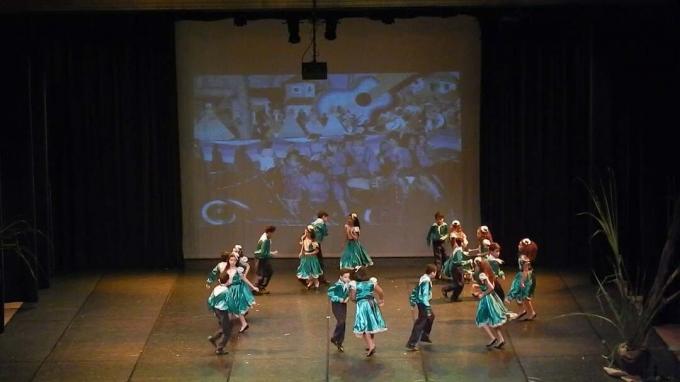Unlike other regions, which are more similar in terms of characteristics, the dances of southeast Brazilians concentrate in themselves the great cultural diversity existing in the country.
This happens because, given the great commercial and economic development, the states of São Paulo, Rio de Janeiro, Espírito Santo, Minas Gerais – especially the first two – end up covering a wide range of people.
see more
Infallible: eliminate grease stains from washed clothes with this…
Coca-Cola with yellow cap: understand the meaning of this product
In this way, as well as other cultural manifestations, the predominant dances in the Southeast region bring together aspects of popular Brazilian dances, but with their own characteristics. Check below 9 typical dances of the Southeast region, one of the most diverse in Brazil.
Dances from the Southeast region: Samba

Internationally known, samba is the most popular typical dance of the Southeast region. In Brazil, samba was created in the state of Rio de Janeiro and, since then, it has gone hand in hand with the
Carnival, an annual public festival with parades and ridiculous costumes, which has its origins in Western Christianity.In its creation, Brazilian samba was based on the samba de roda spread by Africans who lived in the state of Bahia.
Samba has several different types, and the best known are those from Bahia - with lambada and samba de roda -, Rio de Janeiro and São Paulo.
In Rio de Janeiro, samba has a direct connection with life in the hills, so that the lyrics portray in a mild and humorous way the difficulties and barriers faced in popular everyday life.
Despite having completed 100 years of samba in Brazil on November 26, 2016, the National Samba Day is celebrated annually on December 2.
In summary, the rhythm that predominates in Brazilian samba is happy and contagious. Thus, it is one of the great attractions of the country to foreigners who visit it.
Dances from the Southeast Region: Xiba

Originating on the north coast of the state of São Paulo, the Xiba dance resembles a square dance, in that the participants are organized in a circular formation.
Also called “outdoor country dance”, its rhythm is at the sound of violas, guitar, cymbals, tambourines, cavaquinhos and even tap dancing. In addition to São Paulo, Xiba is also common in Rio de Janeiro.
Dances from the Southeast Region: Fandango

Common in the state of São Paulo, originally Fandango is a Spanish dance. The first documentation of this dance was performed by a priest in 1712.
Their formation is also circular, but in pairs. Therefore, it is seen as a fertility or courtship dance, and is performed between couples during meetings or festivals.
His pace starts out slow and gradually builds up to snappy, quick strides. Thus, the dance is accompanied by string instruments, such as guitars, and tambourines.
The theme usually adopted by the participants of this dance is nautical. Thus, for dancing, costumes referring to ship crew members are adopted – like a captain, for example.
Dances from the Southeast region: Mineiro Pau

The Mineiro Pau dance is performed exclusively by men – whether adults, young people or children – who use sticks to accentuate the rhythm of the choreography.
Each person uses one or two sticks. The training is circular, and is carried out by about 25 participants. In short, the presence of the baton in the choreography makes Mineiro Pau considered a warrior dance, a simulation of combat, symbolizing attack and defense.
Dances from the Southeast region: Dance of São Gonçalo

Although its first record on Brazilian soils was in the state of Bahia, in 1718, the dance of Portuguese origin São Gonçalo is found in several states of Brazil. Thus, it is adapted with its own characteristics in each of these regions.
Very widespread in the state of Minas Gerais, it is considered a vow dance, where “spinsters want to get married”. Therefore, their training is carried out by ten pairs of young women dressed in white, where each one of them is responsible for carrying a large wooden arch decorated with tissue paper as well white.
The dance is accompanied by viola and accordion music. Despite the circle being formed only by female participants, the dance of São Gonçalo has the presence of a single male member.
Dances from the Southeast region: Cana Verde

Also bearing Portuguese origins, she is one of the most popular dances in the Southeast region, found in the states of São Paulo, Rio de Janeiro and Minas Gerais. Participants wear traditional clothing such as a shirt, pants, vest and hat for men, and long dresses in discreet colors for women.
The dance is performed with the dancers distributing themselves in two halves, where each half forms a circle and, from this circle, couples are formed. The rhythm is slightly accelerated and, during the choreography, the dancers clap their hands to demarcate it.
Dances from the Southeast region: Ticumbi

Dramatic warrior dance found only in Espírito Santo that is performed by blacks dressed in white.
Dances from the Southeast region: Bate Flechas

Dance of folkloric expression and religious nature in praise of São Sebastião, Bate Flechas is also typical of Espírito Santo.
In summary, this dance from the southeast region consists of a mix of elements from indigenous rituals, black culture and popular Catholicism. In their training, men and women use arrows and stamping feet to mark the rhythm of the choreography.
Dances from the Southeast Region: Jongo

Jongo is a common tribal dance in Espírito Santo – although it is also performed in Rio de Janeiro – which was brought to the Southeast by black people of Angolan origin.
In short, Jongo has magic rituals as its main theme, and consists of a round dance with couples circling around a bonfire (generally, the bonfire can be optional).
It is a fun dance that preserves symbols and languages typical of religion. To accompany the choreography, violas, tambourines and three consecrated drums are used. Jombo was a great influence on Rio samba and is essentially rural.
In addition to the aforementioned dances, it is still possible to mention the presence of other dance styles in the Southeast region. As an example, there is Funk, Capoeira, Ciranda, Batuque, Catira, Quadrilha, among others.
Related content:
- Bah, che! 8 best-known dances from the South region
- 7 Northeastern dances to get to know the culture of the region
- North Region's most popular dances
